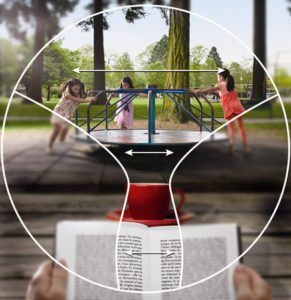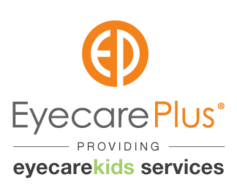Have you ever felt like taking a break from your multifocal or reading glasses? Just for a little while, maybe to that wedding you’re invited to next week, or while you play your favourite sport? Or perhaps you fancy not wearing your multifocal glasses at all? Well, that’s when multifocal contact lenses come into play.
Most people don’t know that contact lenses can be multifocal as well, but it’s true. You actually don’t have to put up with the impracticality of your multifocal glasses. Neither do you have to compromise on your vision, because multifocal contact lenses are designed to give you clear vision at all distances.
How do multifocal contact lenses work?

Multifocal contact lenses work exactly like they sound—they are contact lenses with prescriptions optimised for exceptional vision at all distances: far and close up and anywhere in between. The technology of multifocal contact lenses has improved so much in the last few years that it’s at its current best in comfort and clarity.
There are various designs of multifocal contact lenses to suit your lifestyle and needs. While some emphasise near vision with a boost for distance, others emphasise distance vision with a boost for near. The actual contact lens is divided into different zones of near, intermediate, and distance.
How long does it take to get used to the contact lenses?

Your relationship with your contact lenses is a little like a friendship. You might like them at first, or not so much to start with, but with time as you adapt to each other, and understand how they work, you will start to build trust with the multifocal contact lenses, enjoy their company with clear vision at most distances, and likely develop a good friendship. Building good relations with your contact lenses can take up to 6 weeks, sooner for some. So don’t give up and quit the game too early!
Can I wear multifocal lenses if I have dry eyes?
Healthy lubricated eyes play a very important role in developing that good relation with your contact lenses. Dry eyes can interfere with your lens comfort and vision if not treated. Some of the dry eye symptoms include irritation, redness, blurred vision, stinging, pain, gritty feeling, and burning. However, that doesn’t mean you need to give up on wearing contact lenses if you do have dry eyes. Contact lens technology has advanced to overcome this, such as the daily, multifocal contact lenses that are being designed with water-locking technology that provides high level of moisture needed for dry eyes and in turn minimizing dehydration.
So if your optometrist thinks you have dry eyes, daily multifocal contact lenses might be recommended as your best option. Other dry eye treatments are likely be offered alongside as well, such as lubricant eye drops suitable for contact lenses, Lacritec, Blephasteam, and IPL. Click here to learn more about dry eye treatments.
Who can wear multifocal contact lenses?
 Almost any person who needs to wear reading glasses can potentially wear multifocal contact lenses. That usually includes people over 40 years of age. However, a lot more goes into deciding the best option for you. The most important thing when choosing multifocal contact lenses is communication with your optometrist. Your optometrist will need to know about your hobbies, lifestyle, and regular activities and will then be able to decide and discuss the best options for you.
Almost any person who needs to wear reading glasses can potentially wear multifocal contact lenses. That usually includes people over 40 years of age. However, a lot more goes into deciding the best option for you. The most important thing when choosing multifocal contact lenses is communication with your optometrist. Your optometrist will need to know about your hobbies, lifestyle, and regular activities and will then be able to decide and discuss the best options for you.
Why should I give multifocal contact lenses a try?
Multifocal contact lenses provide the best of both worlds: no glasses, along with clear near and distance vision with an easy transition between the both. Many adults, including grandparents, happily wear multifocal contact lenses.
So if you:
- find reading glasses at times inconvenient
- are one of those who always misplace and lose their reading glasses or multifocal glasses
- like to play sports without glasses
- want to change your look for a special event
- have sensitive skin, and cannot tolerate glasses in constant contact with your skin
Then multifocal contact lenses are worth the try.
Are there any downsides to multifocal contact lenses?
On the other hand, some people experience challenges adjusting to these contact lenses, such as night-time glare and shadows. This is normal and is, in fact, expected during the initial adjustment to the new lenses. However, most feedback from patients has been that the benefits outweigh these initial challenges.
You might think that contact lenses are difficult to use, but that’s not really the case. They are no more time consuming than brushing your teeth. Daily disposable lenses are very easy – you wear them once and then throw them away without having to worry about cleaning or storing them. And they’re great for those occasional times you don’t want to wear glasses.
Written by Shereen Kassir
Optometrist
